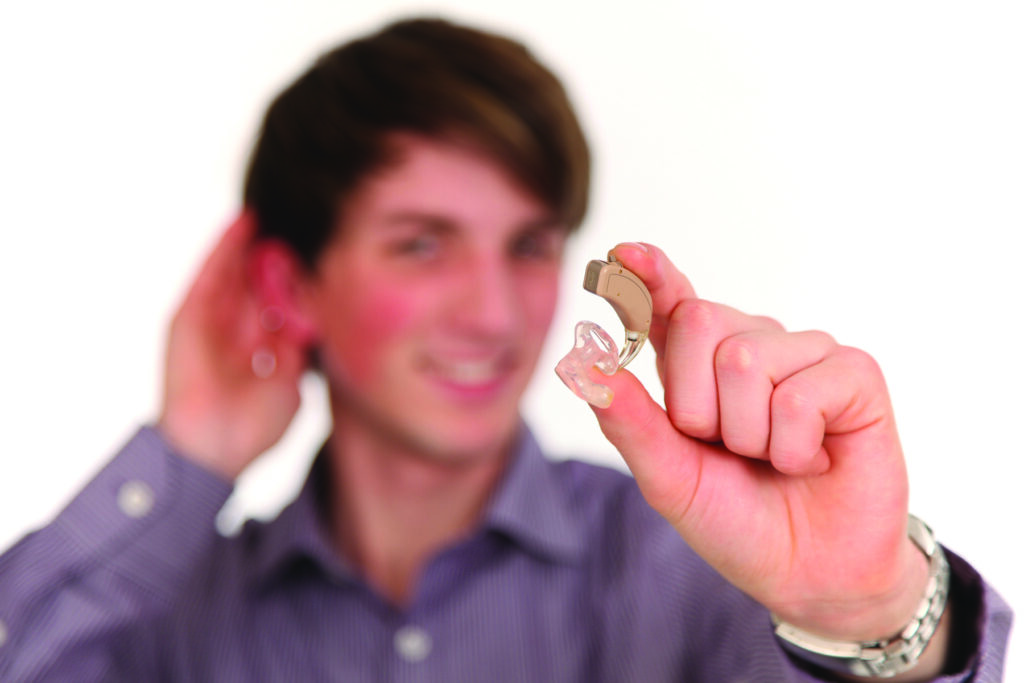The Next Step After the Hearing Device
Volume and clarity. These are the reasons that most people purchase hearing devices. Whether you purchased a hearing aid, cochlear implant, or a Personal Sound Amplification Product (PSAP), you are looking for your hearing device to provide increased sound volume and deliver improved clarity. Hearing devices are great at sound amplification. In particular, Hearing aids and cochlear implants offer many features that are adjustable by an audiologist or hearing device provider, which can offer an improvement in clarity.
Clarity is the ability to understand what is being heard. Clarity can be compromised by noisy environments, distance from the sound source, a speaker’s accent, etc. The biggest challenge is the noisy environment, which can include multiple speakers, a large crowd, traffic, wind, machinery, etc. Adjustments to a hearing device can only help improve clarity to a point.
But, there is more that can be done to improve clarity, especially human speech. It’s called Aural Rehabilitation. If one should experience a physical injury, such as a broken arm or leg, or a stroke or other bodily injury, physical therapy can help the body to relearn how to use the injured body part. It’s basically retraining the brain and exercising the brain, nervous system, and injured body part and practicing to strengthen coordination and endurance. In the case of hearing loss, the introduction of a hearing device is presenting sensory challenges to the brain in the form of new sounds, increased volume, and all kinds of noise. Aural Rehabilitation can help the brain adapt and take on these new challenges.
Obtaining a new hearing device can be quite a tedious process. First there is the hearing test, ear exam, device selection, adjustments, and real world usage. The last steps are typically repetitive, report the experiences to the audiologist or hearing device provider, more adjustments (or a change of device type or model), and a return to real world usage, followed by continuous adjustment cycles. This adjustment process can go on for weeks or months, which can include exhaustion and frustration. Most of the time the process ends with a satisfied hearing device customer, or at least they feel that they have reached the point of diminishing returns.
Too often, the hearing device acquisition process ends at this point. Customers are frequently not aware that the game is not over, there is more to score. Aural Rehabilitation is a form of therapy in which
hearing-impaired individuals are taught to improve their ability to communicate. Methods taught include, but are not limited to, speech reading, auditory training, use of the hearing devices, and use of assistive listening devices, such as telephone amplifiers, neckloops, Bluetooth receivers, etc. There are a number of software products available that can provide auditory training (i.e., LACE, Brain HQ, Read my Quips, Hear Coach, and others). Some of these products are said to retrain the brain to comprehend speech up to 40 percent better in difficult listening conditions.
If you wear a hearing device or are in the process of purchasing one, or if you just want to improve your hearing clarity, you should consider talking to your audiologist or speech and language pathologist, and including Aural Rehabilitation as part of your overall hearing improvement program. You’ll be glad you did!
About the author: Art Matlock is the chairman of the Hearing Loss Association, Lakeland Chapter. For more information about hearing loss or the chapter, email him at hla-lakeland@hotmail.com or call (863) 853-3130.
CREDITS
story by ART MATLOCK
